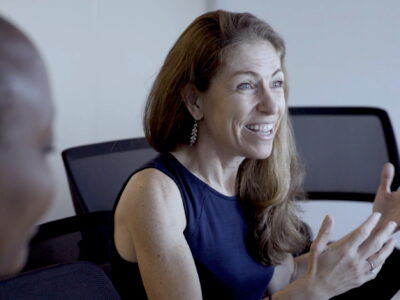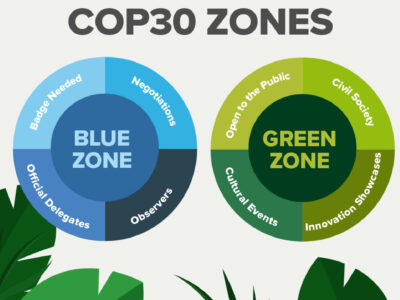In 2015, the United Nations established 17 Sustainable Development Goals as “a blueprint to achieve a better and more sustainable future for all.” The goals range from eliminating poverty and hunger to reducing inequality and tackling climate change. To solve these complex and systemic challenges, the United Nations Development Program (UNDP) is establishing country support platforms (CSPs), or sets of policies, programming, and partnerships tailored to a country’s specific social, economic, and sustainable development needs. CSPs vary depending on the country.
The Environment, Peace, and Sustainability (EPS) program at AC4, in partnership with the Agirre Lehendakaria Center (ALC) in the Basque Country, has been helping UNDP to learn about the merits and challenges associated with more experimental country support platforms. AC4 and the ALC analyzed how four early adopters — Paraguay, Pakistan, Somalia, and Macedonia — are interconnecting organizations and efforts in the broader development system. The research delved into the types of strategies different country offices are implementing, as well as the narratives around social innovation toward desired changes.

Through this evaluation research, AC4 and the ALC have found that CSPs have enabled increasingly systems-based approaches to development challenges. Across the four case-study countries, there have been more pushes overall for collaborative and platform-based work toward achieving the Sustainable Development Goals (SDGs), though the exact configurations have been very context-specific.
Sophia Rhee, an EPS research associate at AC4, conducted 14 interviews with members of the UNDP country office in Somalia and several partner civil society organizations. “Because Somalia has a more fragile state and is currently developing its public and private sectors, state-building and civil society is an important focus when thinking about how to achieve the SDGs through CSPs,” said Rhee. “There is also a big movement towards holding tech summits and connecting people throughout the diaspora which was very exciting to hear about.”
The promise of this type of development and technological connection is not without challenges, however. In her interviews with UNDP staff in Somalia, there were certainly concerns around what these types of projects would mean for people in some parts of the country without mobile phones, highlighting some of the difficulties UNDP has faced when it comes to grappling with development inequalities in digital tools. Yet, many interviewees do believe that technology can indeed play an important role in increasing the voices of Somali people within UNDP’s work.

Gorka Espiau and Itziar Moreno at the ALC conducted similar interviews in Paraguay, Pakistan and Macedonia. In Paraguay, the biggest focus was around soy and beef value chains. One CSP, the Sustainable Commodities Platform, emphasizes the need to incorporate more cultural and participatory dynamics into value chain discussions. While interviewees have seen CSPs as a roadmap or strategic plan to alleviating problems around these value chains, they also conveyed that much of this work is similar to work that the public sector had already been doing before the SDGs were developed. Other interviewees in Paraguay shared that the platforms were a real opportunity to give voice to Indigenous communities around food production and value chains. A senior member of the UNDP country office in Paraguay explained the additional efforts they put into making sure everyone was represented. “Knowing the physical distance problem for platform events for Indigenous communities, we always invited them with enough time. We set the date assuming three months in advance, they already knew, they already set the agenda and costs were covered, so that they could manage the logistics to come to the meeting.”

This support for participation proved indeed to be effective. An Indigenous leader from the Aché ethnicity highlighted the value for his community. “We usually didn’t participate in these kinds of UNDP initiatives, at least not actively and not really being heard. The platform is helping us to get to know other realities. We all want a change in production and we can achieve things together. Puerto Barro not only produces, but also creates and preserves.”
In Pakistan, CSPs have focused around the sustainable development challenges of urbanization, for instance through the Islamabad Urban Platform. Here, systems-level thinking around urban challenges spurred the co-creation of a platform enabling civil society, public institutions, and the private sector to work together. Interviewees conveyed that the culture of CSPs is quite positive and includes very few outsiders. The links created with the public and private sectors have been one of the strongest outcomes from this new way of working. “It’s been two and a half years, but within this time period we’ve seen UNDP evolve quite quickly. There’s an eagerness to do new things, adapt to new ideas and experimentation is seen as a value now,” said a private tech company partner from Islamabad.
Similarly, Macedonia’s CSP sees an integrative urban emphasis to mobilize around the redesign of urban public services for certain challenges such as waste and climate change. The platform, called Skopje Lab, focuses on public sector partners and citizens’ inputs to co-create solutions. “These prototypes might fail but it’s better to have spent a small amount of money and time on designing a bad solution than to rush into a full pledge and end up with a disaster,” one Skopje country office member stated.
“While there are many amazing projects happening in these countries that directly support the SDGs, a big finding in our interviews across all of these countries was that the label of country-support platforms hasn’t quite permeated into the everyday work that people are doing,” said Rhee when reflecting on their findings. “People would share some of their work around various sustainable development projects, but they didn’t necessarily say that the project was under the country-based platform.” However, the findings also show that CSPs have been actively expanding the number and nature of actors with which UNDP usually works.
This research conducted by AC4 and ALC also identified significant opportunities for improvement. This included how key performance indicators need to adapt to different contexts, as the interviews highlighted the myriad ways CSPs are experienced in different country contexts.
These lessons from the case studies in CSP “early adopter” countries will inform UNDP to better encourage both positive changes and awareness of the challenges associated with systemic approaches to sustainable development. This research will help UNDP in its mid-year review for the future role of CSPs in achieving the SDGs. These platforms have allowed UNDP to work to respond to the specific needs and priorities of each country to make the SDGs relevant and attainable in different contexts. The evaluation research conducted by AC4 and the ALC will allow the UNDP to do this even more effectively.



